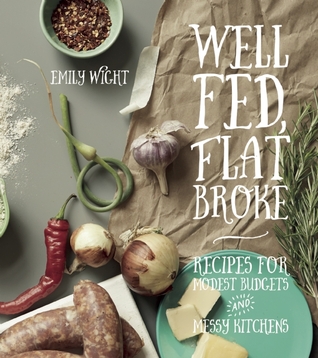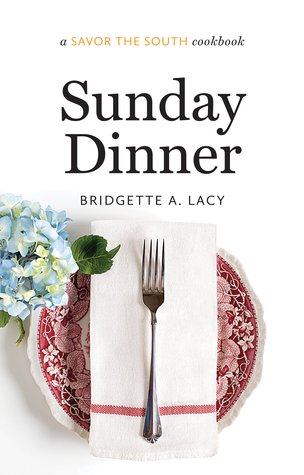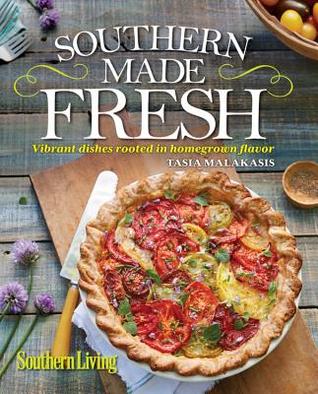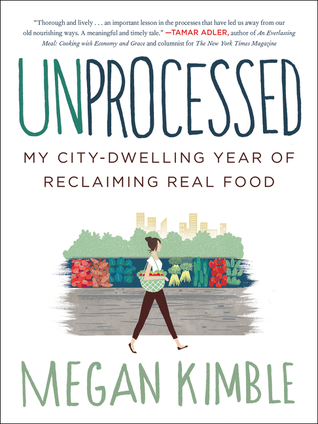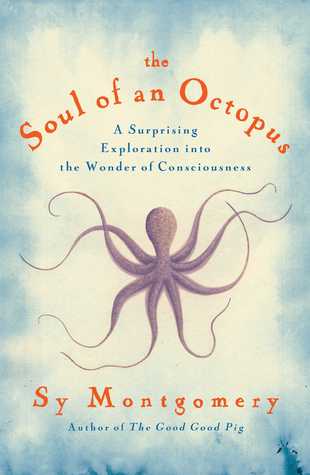Unprocessed: My City-Dwelling Year of Reclaiming Real Food by Megan Kimble
Megan Kimble was a twenty-six year old graduate student when she decided to eat all unprocessed food for an entire year. The book is mostly her processing what "unprocessed" means when it comes to food. Each chapter focuses on one type of food - bread, milk, meat, etc. I thought it was impressive, if not pretty unrealistic, how much stuff she tried her hand at making from scratch - bread, chocolate!, salt from sea water. I make a LOT of my own food from scratch, but working full time it's really hard to make absolutely EVERYTHING you eat from scratch. I'd be interested to see if she keeps some of that stuff up long term. Overall, it was an interesting book and I was really impressed with how hands-on she was in making her own "unprocessed" food, but it wasn't the best food-related book I've read. I ended up buying this one because my library didn't own it, but it's probably not one I would have bought if I'd read it from the library first. It's good, but not great.
Some quotes I liked:
"The problem with Big Organic, the industrial-scale organic growers that sell to Safeway and Whole Foods, is in it's modifier. Organic food was never intended to fill a place like Rio Rico. Organic growers originally approached the business of growing food in a fundamentally different way; when demand swelled, they were forced to fit this fundamentally different produce into an unchanged food system." (p. 111)
"In 1943, the U.S. Bureau of Human Nutrition and Home Economics issued a guide for Wartime Canning of Fruits and Vegetables, encouraging the county's fledgling canners to do their patriotic duty. 'Every jar of garden-fresh fruits and vegetables you put up at your home this year will do double duty. It will help your family to keep well-fed next winter. And it will help the Nation by easing the load on transportation and commercial food supplies.' Today, it's hard to read the pamphlet without the screen of irony, as today we are supposed to help 'the Nation' by increasing our consumption of commercial food supplies. Maybe this is why canning is back in style. It's no longer a patriotic act but rather one of subversion, as we withhold our support from a commercial food supply that has failed to keep us 'well-fed'." (p. 210)
"In the name of economy, of time or capital, we have outsourced to others those key activities that define the day-to-day. Don't want to make a lunch? Buy a Lunchable. Don't want to help your kids with algebra? Hire a tutor. But what is life if not the day-to-day? Sunsets in Nicaragua and family vacations in the Canadian Rockies are spectacular, but if that's what we're waiting around for, what is the point of a Wednesday evening? The tasks we have decided to label mundane - as tasks! - are that which help accumulate into relationships and memories. Cooking dinner or helping your kids with homework." (p. 221)
"In 2012, the Washington Post reported that if the U.S. government ended dairy subsidies, as it was threatening to do as we approached yet another 'fiscal cliff,' the price of a gallon of milk might hit $8. An unhappy development for consumers, surely, but one that also reveals how grossly underpriced a gallon of milk is when it costs $2.99." (p. 256)

Descent by Tim Johnston
On what should have been a normal family vacation a brother and sister go out for an early morning run and bike ride, but only one of them comes back. As each family member tries to cope and survive without their daughter and sister, they all react in their own terrible way. The book is told alternately from each family member's perspective with small snippets from the missing girl - what happened and what continues to happen with her. The book is pretty sad and often hard to read with all the terrible ways the family members cope. A lot of the book explores how long should a family keep searching when someone goes missing - do you continue to hope and think they're alive or do you start searching for a body? I love shows like Disappearedso that's why I wanted to read this book, but it just didn't draw me in right away. Only because in flipping through the book I saw some things about the end kept me going to find out how everything happened. The ending is somewhat of a nail biter and I did read the whole book in one day - off and on, not in one sitting. Overall, it kept my interest, but it's not a book I would recommend to anyone.

Pig Tales: an Omnivore's Quest for Sustainable Meat by Barry Estabrook
Pig Tales is a thorough and comprehensive book that is also a quick and easy read. Estabrook divides the book into three sections - exploring pigs as animals, the world of factory farmed pork, and how some farmers are going back to traditional, sustainable hog farming. Pigs are easily trained and incredibly smart animals with an intellectual capacity comparable to a three-year-old child. Because of their high intelligence and social nature factory farming is even crueler for pigs. Estabrook goes through every aspect of the process from breeding and gestation crates to the slaughtering process to highlight the horrors of industrial hog farming. He also shows the damage to the environment and how anyone who is unfortunate enough to live beside an industrial hog farm is affected by the odors, manure spray, and toxic gases and bacteria that come from these farms. Thankfully he ends the book with farmers who are going against the industrial grain to raise hogs in a humane and sustainable way. There have been many books written about the horrors of factory farming, but Estabrook does a great job of succinctly explaining the issues and getting the information across in a very easy to read way. Like Tomatoland where Estabrook explored industrial agriculture through tomatoes, he does the same for industrial meat farming through pigs with Pig Tales. An excellent book that explores a complex and horrific issue.
Some quotes I really liked:
“The work of Held, Mendl, Broom, and Croney suggests that there’s a lot more that pigs could tell us about their mental capacity – given the chance. Unfortunately, funding for research into pig cognition has dried up, particularly in the United States. ‘A lot of our research has not been published because there are some people who don’t want that information out there. We had people trashing our work and saying that animal welfare wasn’t a good enough reason to fund research and that our findings could potentially harm the pork industry. [says Croney] Think about who funds this work – the industry.’” (p. 36)
“It’s hard to imagine a more formidable candidate for America’s most destructive invasive species than the feral pig. A pig can run 30 miles per hour and leap over three-foot fences. They are virtual breeding machines. On average, a feral sow has one litter of six piglets per year, but can have up to twelve. The young typically begin breeding at around one year old. Unguarded piglets are susceptible to predation, but once a wild pig has matured, humans are the only major predator it faces. Bears and panthers do take the occasional hog, at some risk to themselves. Mature pigs have killed black bears.” (p. 49-50)
“Since 1975, more than thirty hog workers have been asphyxiated by hydrogen sulfide, the common rotten-egg-smelling gas that rises from pits below barns and from open-air ‘lagoons,’ the industry’s euphemism for the manure-filled ponds that range from the size of an Olympic swimming pool to ones that would cover a city block. Even a few breaths of hydrogen sulfide at levels above 500 parts per million can cause a worker to collapse and stop breathing. Levels of the gas greater than 100 parts per million can cause eye and lung irritation, nausea, and vomiting, and leave those exposed with lasting problems involving concentration, learning, memory, and muscle function. Routine agitation of manure lagoons can cause hydrogen-sulfide levels to rise as high as 1,000 parts per million.” (p. 114)
“Estimates of a pig’s manure output vary from twice as much as a human’s to ten times as much. But even at the low end of that range, the 7.5 million hogs in the five contiguous North Carolina counties (including Duplin County, where Herring lives, which has more than 2 million hogs, the most of any county in the United States) produce as much waste as all the residents of the three largest US cities, New York, Los Angeles, and Chicago combined.” (p. 122)
“Shortly after Watson lost her seat in the legislature, Wing published a paper indicating that factory farmers deliberately built big hog barns in areas with poor, black populations that were unlikely to complain. He showed that in North Carolina, a factory pig farm was seven times more likely to be in a poor district than a better-off one and five times more likely to be in an area with a large black population than a predominately white region. For operations owned by large corporations, as opposed to individual operators, the discrepancies between white/black and rich/poor locations was even larger.” (p. 130)
“[Bill] Stowe’s [CEO and general manager of Des Moines Water Works] main complaint is that the government holds agricultural polluters to a different standard than other sectors. ‘Nonagricultural polluters are heavily regulated. Cities and towns have to have sewage plants, storm sewers are tightly controlled, factories have to treat their wastewater. When you buy a car, the government mandates that it comes with an expensive catalytic converter to control emissions coming from your exhaust pipe,’ he said. ‘If it’s human waste, it’s highly treated before it ever makes it to a waterway, but if it’s pig’s waste, which there is a lot more of than human waste in Iowa, it can be piped right into a stream.’” (p. 150)
“In the 1970’s, Stuart B. Levy kept a couple of flocks of chickens on the rolling countryside west of Boston. No ordinary farmer, Levy is the distinguished professor of molecular biology and microbiology and of medicine at Tufts University School of Medicine and also the president of the Alliance for the Prudent Use of Antibiotics…Levy’s chickens took part in a never-before-conducted study. Half the birds received feed laced with a low dose of antibiotics. The other half received drug-free food. Within two days, the treated animals began excreting feces containing E. coli bacteria that were resistant to tetracycline, the antibiotic in their feed. After three months, the chickens also excreted bacteria resistant to such potent antibiotics as ampicillin, streptomycin, carbenicillin, and sulfonamides. Even though Levy had added only tetracycline to their food, his chickens had somehow developed what researchers now call ‘multi-drug resistance’ to a host of antibiotics that play important roles in treating infections in humans. More frightening, members of the farm family tending the treated flock soon began excreting resistant strains of E. coli, even though they were not taking antibiotics themselves. When Levy’s study was published in 1976, it was met with skepticism. ‘The other side – the industry – thought we had fabricated the data,’ he told me. ‘They could not believe that this would have happened. The mood at the time was that what happens in animals does not relate to people. Be we had the data. It was obvious that using antibiotics this way was an error that should be stopped.’ Instead of stopping, industrial agriculture spent the ensuing four decades shoveling more and more antibiotics into the mouths of animals – from about 18 million pounds per year in 1999 to 30 million pounds in 2009.” (p. 165-6)
“Although the FDA wisely forbade feeding food made of most animal tissues to cattle in 1997 [in response to mad cow outbreaks in Britain]…farmers can feed pigs rendered bones, viscera, heads, beaks, and tendons from slaughterhouses that process cattle, poultry, and even pigs. Worse, the pig by-products that go into hog feed can come from sick and dying hogs and hogs that have died on the farm…Other common ‘animal protein products’ used in pork production include: dried feces of cows and pigs (manure contains protein); poultry litter, including excrement, dead chickens, and uneaten chicken feed; hydrolyzed hog hair; feather meal (ground-up chicken and turkey feathers); rendered roadkill; animal fat, including pig fat and poultry grease; dried blood; food that has been condemned for human consumption because it has been adulterated with rodent, roach, or bird excrement; and unsalable products from bakeries and candy manufacturers. Factory-farmed hogs not only provide inexpensive meat to humans but also act as convenient disposal systems for the waste products of large-scale food production. The industry calls the practice ‘recycling.’” (p. 252-3)

Kitchens of the Great Midwest by J. Ryan Stradal
There was SO much hype about how great this book is, but I was very disappointed. When you read the description of the book it's VERY different from what actually happened in the book. You think that the main character Eva would be the focus of the book, but she is more like a small character that sometimes only makes a brief appearance in the chapters. Each chapter is told from a different character's perspective, but it's often hard to figure out for most of the chapter how or why this person relates or interacts with Eva. Many of the characters are not likable at all and often the dialog is very vulgar seemingly for no reason other than to be vulgar. I think it would have been a much more interesting book if it was told from Eva's perspective - there is not ONE chapter told from her perspective. Overall, I was very disappointed and would NOT recommend this one to anyone! This really reminds me of the Italian proverb - "There is no thief like a bad book."
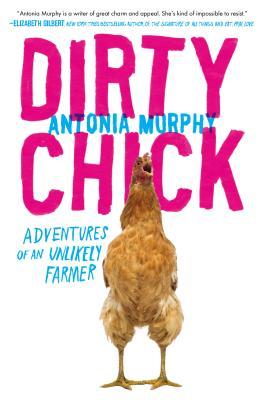
Dirty Chick: Adventures of an Unlikely Farmer by Antonia Murphy
Antonia Murphy grew up in the San Francisco area and never dreamed she would be a farmer. But when she and her husband are expecting their first child they decide to look for a slower and more affordable place to live than California. They settle in New Zealand, where it quickly becomes evident that most people there grow and raise at least some of their own food. Quickly Antonia has dreams of making homemade goat cheese and eating farm fresh eggs, but the reality is much harder and dirtier than she imagined.
I was really excited about this one because I love a good farm memoir, but I was really disappointed with this one. Antonia seems like a glutton for punishment and even when it's glaringly obvious they aren't doing a great job with the animals they have she keeps getting more. There life was so chaotic that it stressed me out just reading about it! And to top it off her older son is special needs and throughout all this animal chaos they are also trying to deal with his seizures and find the right medication to help him. I appreciate self-deprecating humor, but she just seemed really dumb to keep adding animals that they didn't know how to take care of to their already chaotic home - that they were RENTING! So, all along they knew there was a deadline when they would have to move, so why keeping adding more and more animals?! Instead of being funny, this book was stressful and not well done. The only redeeming part was the last 2-3 chapters when the community rallies together when a family loses someone unexpectedly. Overall, there are MANY other much better farm memoirs out there.

Lost in the Wild: Danger and Survival in the North Woods by Cary Griffith
Dan Stephens is a seasoned Eagle Scout who works as a guide for an Adventure Scout camp in northern Minnesota, but on a routine hike with his group he disappears into the wilderness. Jason Rasmussen is a medical school student who wanted to take a solo camping trip in the Minnesota wilderness before his clinical rotations, but unknowingly goes off trail and ended up separated from his tent and gear. Both of these men prepared for their trips and Dan especially knew a lot about hiking, camping, and survival, but both were lost and without supplies by making small mistakes that caught up with them quickly. The book is divided into 4 sections that cover who these guys are and how they ended up in the areas where they got lost, what happened that lead to getting lost, how search and rescue got involved, and when they were found. It was a really interesting book because these guys were not novice hikers, but very well prepared. It shows how quickly a seemingly small mistake can turn into a life or death situation - especially depending on the time of year and weather. The book also highlights the incredible search and rescuers who often donate their time and resources to help find lost people in their areas. A fascinating book overall, but I do wish there was a little bit more from the two guys at the end. Most of the book is building up to them being found, but I wish each of them had a chapter at the end from their perspective.
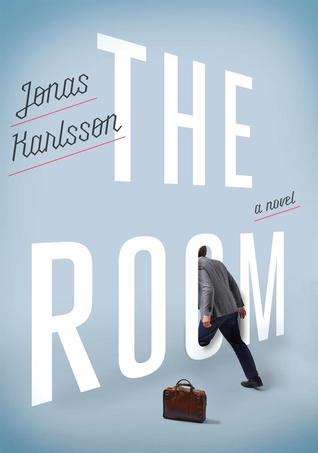
The Room by Jonas Karlsson
This is a bizarre book and I could definitely see why it's compared to Kafka. Bjorn is working in a typical office environment as a new employee, but one day he discovers a new room between the elevator and restroom. To Bjorn it appears to be an empty office and when he's in there he feel calm and renewed. But, his coworkers don't see the room - they see Bjorn standing facing a wall looking very creepy. This turns into workplace drama between Bjorn and his coworkers.
I'm not sure what point the author is trying to make, but it's definitely an odd book and Bjorn is an odd character. I think it could be read as Bjorn is mentally ill and the room is in his imagination or as he thinks that it's a conspiracy against him and his vast intelligence. The end is particularly odd and could be read a few different ways. Overall, a very odd book.
The Soul of an Octopus by Sy Montgomery
The octopus is a unique animal that makes scientists question much of what is known about invertebrates. Octopuses are very intelligent, show emotions, recognize individual humans that they've interacted with, and are expert escape artists. But often they are stereotyped as "evil" and aggressive, when for the most part they can be very gentle despite the power of their 8 arms and dozens of suckers. Sy Montgomery has the opportunity to interact with a few octopuses at the New England Aquarium. She finds that each octopus has it's own unique personality and they like some people more than others. Her works with the octopuses at the aquarium inspires her to learn how to scuba dive so that she can try to interact with wild octopuses. People tend to think of "cuddlier" animals as being cute and wanting to interact with them, but Montgomery shows that interacting with an octopus can be life changing. There are many interesting facts about octopuses in this book, but overall it's a love story to her relationship with 3 special octopuses that she developed a friendship with through her work at the New England Aquarium. If you are interested in animals at all this is a great book about a very misunderstood and mysterious animal.
